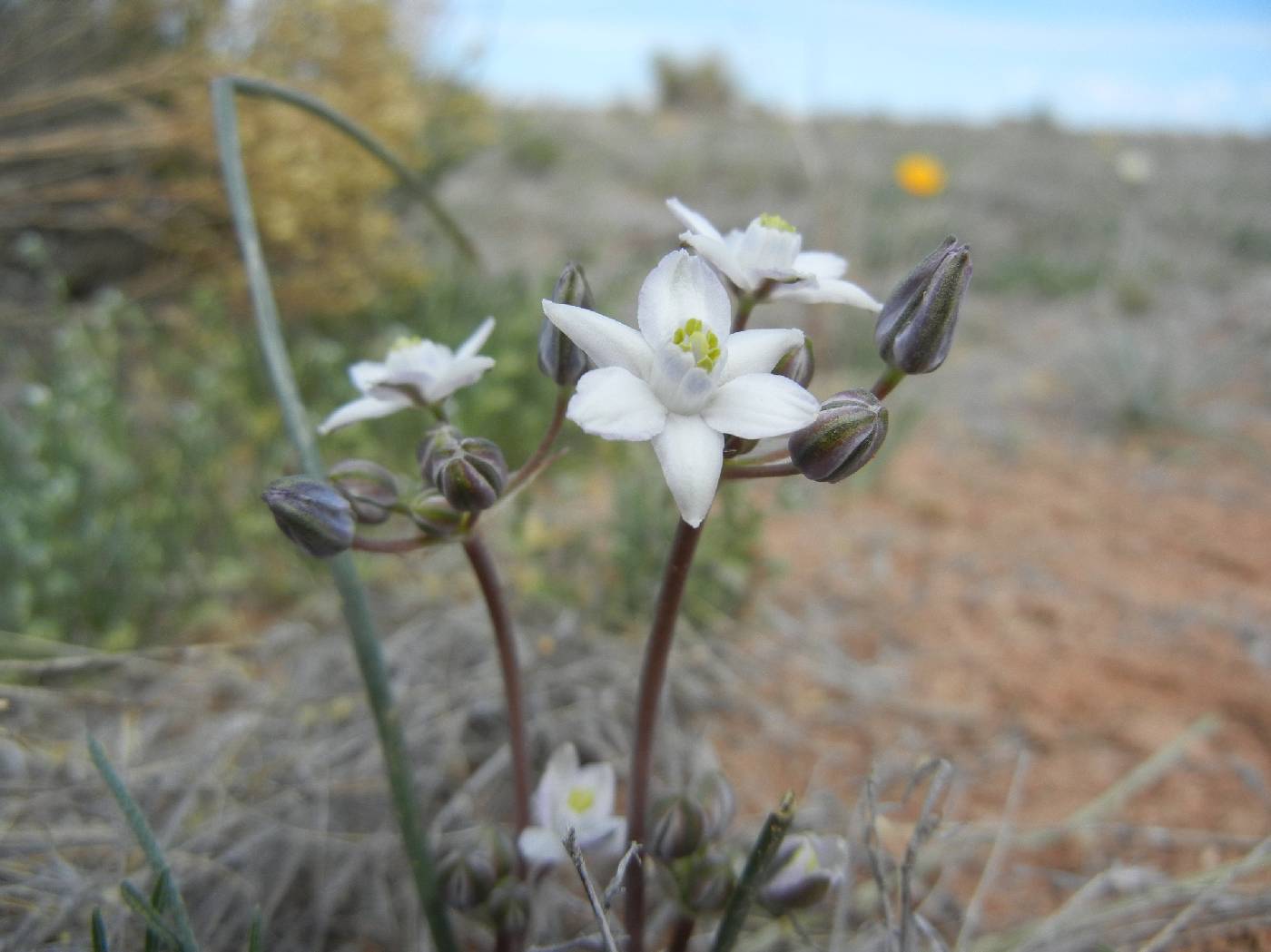Muilla
|
Family: Asparagaceae |
Herbs, perennial, scapose, from fibrous-coated corms. Leaves 1-10, strictly basal; blade linear, elongate, flat, not keeled or channeled, surrounded by fibrous sheath. Scapes 1-2, cylindrical. Inflorescences umbellate, terminal, bracteate; bracts several, white or greenish white, scarious. Flowers: perianth subrotate, narrowly oblong; tepals 6, spreading, mostly distinct, only shortly connate at base, white to greenish white or bluish, sometimes tinged with lilac, subequal; stamens 6, epitepalous, inserted near base of tepals; filaments filiform, subulate, or conspicuously dilated, sometimes overlapping or connate; anthers versatile, introrse; pistil 3-carpellate; ovary superior, sessile, 3-locular, ovules several; style persistent, clavate; stigma 3-lobed, minute; pedicel slender, not articulate. Fruits capsular, slightly lobed, globose, dehiscence loculicidal. Seeds black, angled, coat with crust. x = 7, 8, 10. The distribution of the species in this genus is poorly documented (L. W. Lenz 1975b; J. R. Shevock 1984). R. F. Hoover (1955) transferred Bloomeria clevelandii to Muilla. However, molecular and morphological evidence indicates that B. clevelandii, B. crocea, and B. humilis, all treated here under Bloomeria, are more closely related to Triteleia, and that the three species treated here under Muilla are more closely related to Androstephium (R. Y. Berg and J. R. Maze 1966; J. C. Pires 2000).
|

